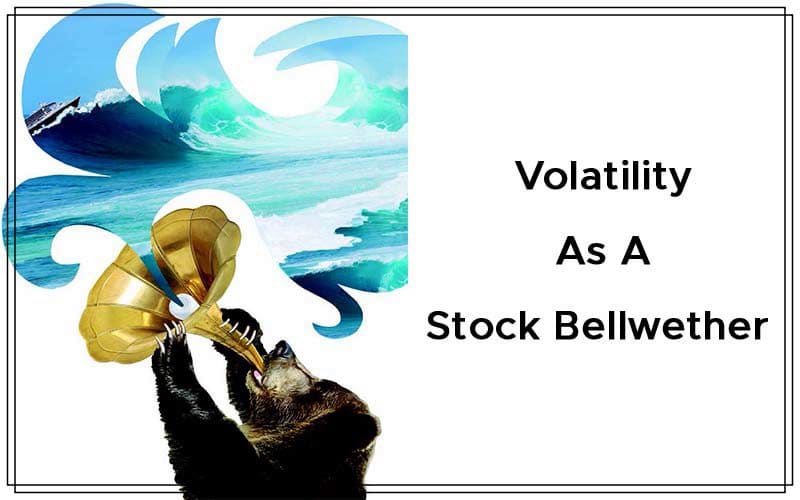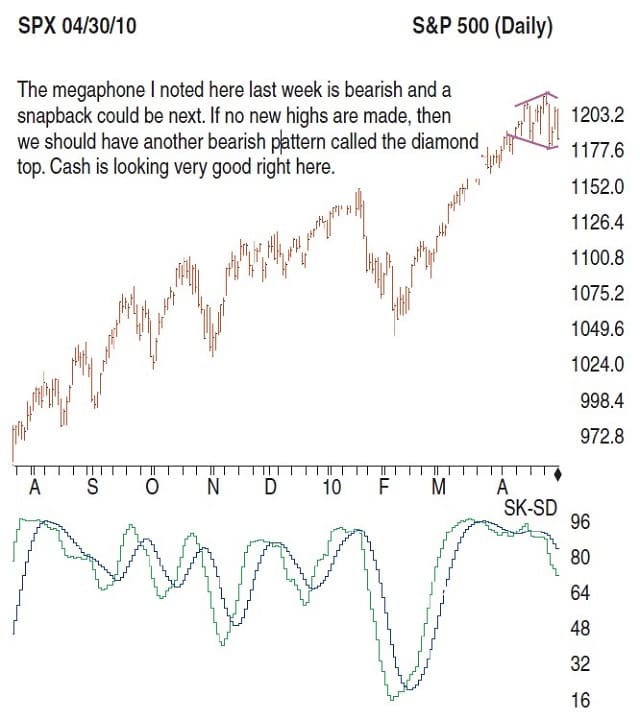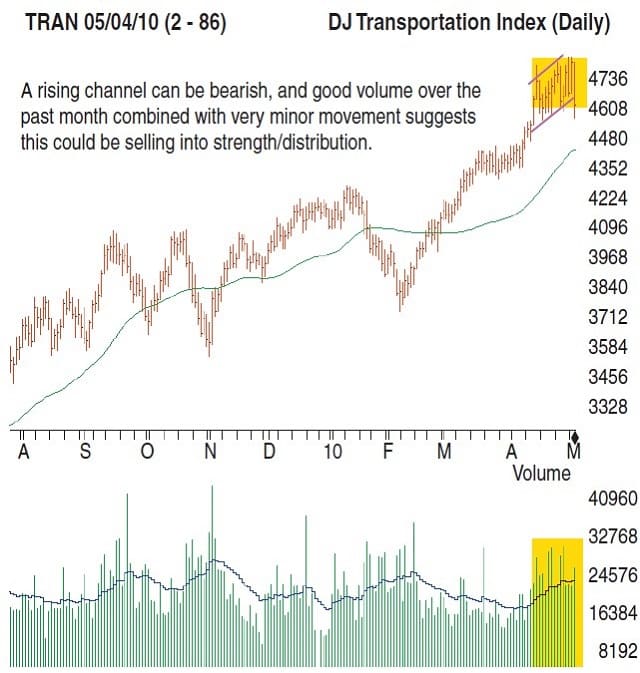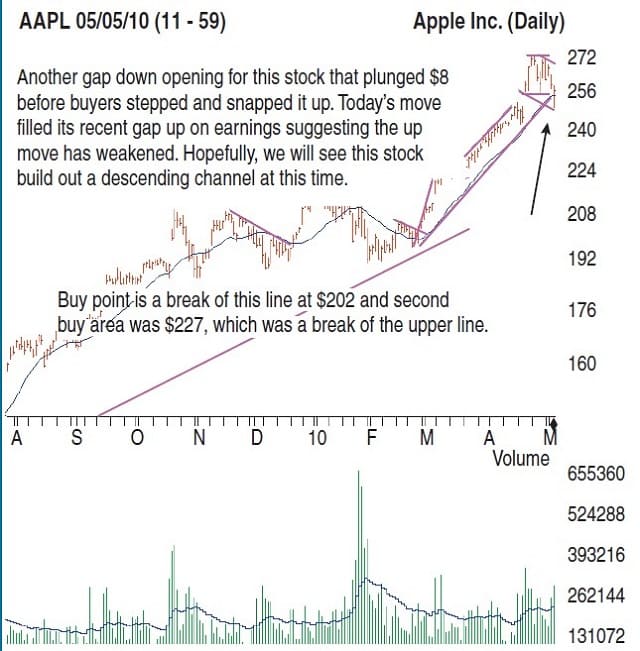Articles
Volatility As A Stock Bellwether By Dan Zanger and Matt Blackman

There are some days that you as a trader never forget. Although your biggest scores are high on the list, even more memorable are days in which you get crushed. Any trader will tell you that their best day is more than offset by the losses on their worst. One reason for this is that stocks rally in linear fashion but fall exponentially in a correction. A recent TV documentary on the new Queen Mary 2 superliner commented that in the last 50 years, average ocean wave height has increased 40%, thought to be the result of global warming causing larger-magnitude storms. Rogue waves, once believed to be a sailors’ myth, have become more frequent as storm intensity has increased. Ship designers ignoring this fact put their passengers at greater unnecessary risk.
Thursday, May 6, 2010, was a “rogue wave” day for stocks. Few traders can ever forget watching the Dow Jones Industrial Average (DJIA) drop 990 points, with most of the damage occurring in just 30 minutes as the “flash crash,” as it was referred to, unfolded. And who could forget the roller-coaster ride that Accenture (ACN) took, dropping from $39.13 to $0.01 and back up to $38.87 in fewer than 120 seconds that afternoon? Did anyone actually buy the idea that the biggest one-day point drop in the DJIA since 1987 was because someone pressed the wrong button or was the result of program trading?
RECIPE FOR SUCCESS
As is often the case, by the time theories to explain the drop had gotten around, the damage had already been done. In reality, no one knows what triggered the stampede, nor should we care. Of more importance was that after a few months of relative calm, volatility returned with a vengeance. Like clockwork, periods of declining or low volatility are interspersed with volatility spikes. And volatility spikes usually warn of a trend change.
But May 6 provided another valuable lesson. Even the most current fundamentals, including forward earnings estimates, provided no warning that the meltdown was coming. Why? Forward earnings estimates, which many analysts tout as a good leading indicator, have a fatal flaw. They are based on the assumption that future performance will be similar to that of the past. All fundamental clues, no matter how timely, are based on history.
It is a bad idea to rely solely on fundamentals to get you into or out of a stock. By the time the fundamentals tell us it’s time to buy or warn about stock or industry weakness, stock prices have already made their move. The efficient market hypothesis is little more than a fundamentally flawed placebo for the technically challenged! When volatility and emotions run high, which happens around important tops and bottoms, markets are anything but efficient. That is not to say that fundamentals aren’t important. If a company misses its earnings expectations, its stock price can get crushed when they’re reported. This is why it is safest to stand aside until earnings have been published. So while unexpected reports can warn of changing business conditions, more often than not the effect is short term.
Suggested Books and Courses About Trading Stock Market
What is more important is getting a sense of the larger earnings trend and corporate picture. Before I buy a stock, I need to see a strong ramp-up in earnings. Quarterly earnings need to be up a minimum of 30% to 40% from the same quarter the previous year before a company captures my interest (after accounting for seasonality and other industry cyclical factors). Other important characteristics are companies that dominate their markets, have a new product or are under new management, are underknown and underowned by institutions, and/or have a relatively small number of shares in the float. Companies with these qualities, combined with powerful stock patterns, have the makings to be powerful and profitable market leaders. But fundamentals are at best a minor consideration for traders. Price and volume action are far more important. They are the building blocks of chart patterns that provide the most reliable clues of what stocks are about to do next.
CLUES THAT THE RALLY IS AT RISK
Like many traders, I prefer bull markets because they are far easier in which to make money. But staying bullish in the face of growing bearish evidence is a habit I’ve done my best to conquer because it’s far too costly. There were a number of bearish warnings that a correction was in the cards well before May 6.

FIGURE 1: FROM THE ZANGER R This is one reason I was lightening up on my longs. This pattern has provided an uncannily accurate warning of a correction in the major indexes and larger-cap stocks.
The megaphone top in the Standard & Poor’s 500 was one such warning (Figure 1). Megaphones occur when a stock or index establishes new highs and then successive lower lows. This action shows that volatility is picking up. Sometimes the megaphone top will evolve into a bearish diamond pattern, which had begun to build in the days leading up to May 6. Transports confirm the broad market rally and can likewise warn of market weakness. As we see from Figure 2, the Dow Jones Transportation Average (DJTA) was putting in a bearish ascending channel that was another sign of distribution. Whenever transports turn bearish is a time for caution.

FIGURE 2: DOW JONES TRANSPORTATION (DAILY). The DJTA had been looking bearish in advance of the May 6th meltdown. When transport stocks get sick, the major market often follows. Traders ignore this signal at their peril.
Rising volatility was further evidenced by the increasing number of gaps in my market leading stocks. Gapping in both directions shows a battle brewing between the bulls and the bears. As we see in Figure 3, Apple Inc. gapped up in late April, then dropped to fill that gap on May 5. An upward gap being filled to the downside indicates that bears are gaining the upper hand. We saw similar gaps in a number of my other market leaders that alerted me to the danger.

FIGURE 3: INCREASING NUMBER OF GAPS. One of my favorite stocks since the recovery began in earnest in late 2003 and 2004 has been Apple (AAPL). But it and a number of other market-leading stocks (like Baidu.com and Amazon) have been showing a fair amount of gaps, which warn of rising volatility and a possible trend change.
Another good indication that a rally is running out of room is declining price momentum on rising volume. It shows that buyers are being overwhelmed by sellers. This together with megaphone tops, rising channels, and gaps being filled further confirm that professional mon-ey managers and hedge funds are selling into strength. Traders must remain ever conscious that stock prices move up linearly but fall exponentially. It explains why corrections can be so devastating — gains that have been accumulated slowly and with great discipline can turn into losses faster than the time it takes to call your broker. Those who ignore rising volatility and the telltale signs put their trading accounts and portfolios at increased risk — risk that is often avoidable.
Dan Zanger gained media attention thanks to a December 2000 Fortune article titled “My stocks are up 10,000 percent!” It described his “overnight” success in turning an ante of $10,775 into $18 million in 18 months. He is the host of Chartpattern.com and author of the daily “The Zanger Report” stock trading newsletter.
Matt Blackman is a technical and financial writer, trader, keynote speaker, host of TradeSystemGuru.com, and the author of “The Macro Market Monitor” monthly newsletter. He is a member of the Market Technicians Association and Canadian Society of Technical Analysts.
